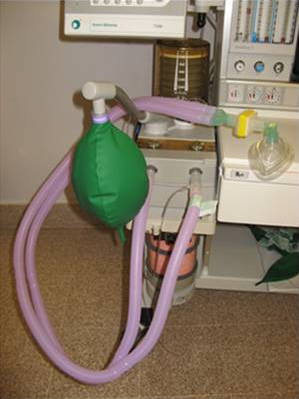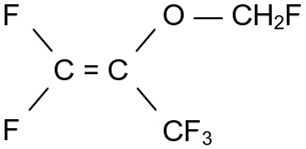Toxicity
Toxicity associated with circle systems
Increasingly, breathing systems with carbon dioxide absorbers are being used (Fig 1). These interact with sevoflurane to produce a range of potentially toxic compounds, which have, rather unimaginatively, been called compound A, compound B, etc, through to compound E.
Only compound A (Fig 2) has the potential to induce significant clinical effects. However, even after prolonged exposure, and despite potentially toxic levels being reached, there have been no reports of actual renal toxicity.
Malignant hyperthermia
Both isoflurane and sevoflurane are trigger agents for malignant hyperthermia. Nitrous oxide is not.
Megaloblastic anaemia
Although nitrous oxide is not metabolized to any significant extent, it does interfere with DNA synthesis in the bone marrow. Prolonged exposure may start to produce megaloblastic changes.

